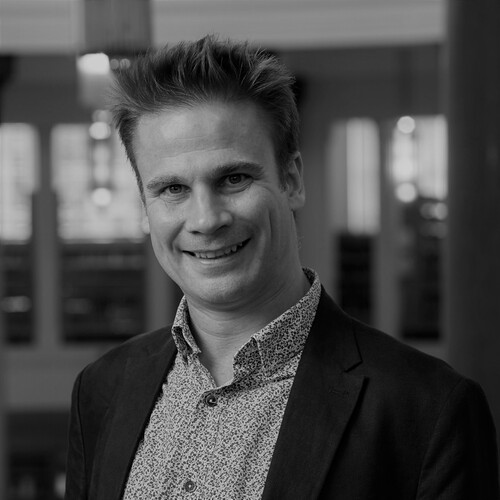Chair
James Mussell
Trading in Death: Periodicals, Seriality, Ephemerality
Abstract
›Trading in Death‹ was an article published by Charles Dickens in Household Words in which he complains about those profitting from the recent death of Wellington. The article deplores the ›system of barbarous show and expense‹ that ›erected itself above the grave‹, not because of the disrepect shown to the dead but what it brought out in the living. However, what interests me about the article is not Dickens’s attack on the transformation of memorial into marketplace but his decision to reprint specimens of such profiteering in Household Words. Linked to the moment, these advertisements were themselves ephemeral but printed in daily and weekly newspapers they were also part of publications that were ephemeral too. By reprinting them in Household Words, however, Dickens both reconstituted them as a genre – they became instances of a type – and attempted to preserve them for the future. Yet he did so reprinting them in his own weekly magazine, itself locked into serial rhythms that necessitated ephemerality.
My paper uses ›Trading in Death‹ to consider the periodical’s close relationship with the ephemeral. I examine the necessity of ephemerality: the genre’s connection with the passing moment and the way that passing is built into periodical process. I also consider the way that ephemerality is resisted, whether through repetition (keeping things present), reprinting (multiplication as memory), or rebinding and reformatting (the book as memorial). There is a clear link between the ephemeral and the market, but my argument is that there is also something pleasurable about time passing. Part of the appeal of serial media is that they document a moment even as they permit it to pass away. The methodological challenge for those working with such media is to regonise this temporal economy. Periodicals are hybrid texts that institute a technology of forgetting even as they embody an attempt to remember.

James Mussell
James Mussell is an Associate Professor in Victorian literature at the University of Leeds and Director of the Centre for the Comparative History of Print (CHoP).
Monday, 14th June 2021 at 15.45 CEST (UTC+2)
Sönke Parpart
Auf der Schwelle der Jahrhunderte. 1900 als liminaler Zeit- und Handlungsraum in der Wiener Tagespresse
On the Threshold of the Centuries. 1900 as a Liminal Temporal and Operative Space in Vienna’s Daily Newspapers
Abstract
Vienna’s daily newspapers treated the turn of the year from 1899 to 1900 as an epochal event as it was happening. Although Vienna at the turn of the century is considered the crystallisation point of modernity, this genuinely contemporary perspective has largely been overlooked to date. This paper seeks show the productive tensions between poetic techniques in the daily newspapers of the age: in the media’s accompaniment and staging of the turn of the years as a turn of the century, the journalistic principle approaching simultaneous narration comes into conflict with the attempt to place one’s own present in historical context. Unlike other historical dates, 1.1.1900 does not take on significance only in retrospect; it is formally emphasised in the calendar system and is thus subject to connotations and expectations before it actually takes place. Despite the repeatedly articulated awareness that the year 1900 represents a purely arbitrary caesura, the newspapers accompany the turn of the year with a plethora of retrospectives on the outgoing century, thereby appropriating historiographical techniques. At the same time, they articulate the twentieth century with respect to hopes and fears and thus identify the century that lies ahead as a qualitatively different age. By taking what is initially considered a calendar event as an opportunity to take stock of what was while also formulating expectations for what is to come, they establish not only a temporal space of before and after, but also a threshold space of the present that lies between them. As a time between the centuries produced by the media, this third space enables the reader to experience the turn of the century as the dawn of a new epoch. This is, moreover, often connoted as a political and ethical operative space via which the malleability of the future is conveyed to the public.

Sönke Parpart
Sönke Parpart is a graduate student at the University of Marburg.
Monday, 14th June 2021 at 15.45 CEST (UTC+2)
Moritz Neuffer
From Chronopoetics to Anachronisms: Economies of Timeliness in Modern Intellectual Journals
Abstract
Since the formation of the modern public sphere, periodicals are stylized and perceived as being in accordance with their time: they »mirror« and comment on their times, they »form« and influence or even »write“ time. In 1813, philosopher and journal editor Friedrich Wilhelm Joseph Schelling characterized the journal-form by a »double-sided« relation to its present, both active and passive: »inwiefern sie einerseits auf die Zeit wirkt, andererseits selbst wieder ein Bild der Zeit seyn will.«
Up until the present, journal-makers and publishing houses have used concepts and metaphors of contemporaneity and avantgardism to describe the value of their publications. More than a sales pitch however, the timeliness of journals has its own history as an object of intellectual discourse and of philosophical reflection. In my paper, I try to show that intellectuals with a strong concept of »history« also tend to discuss editorial agendas in terms of theories or philosophies of history. This holds true for the »epoch-making« journals in Weimar Classicism, for the Young Hegelian periodicals of the 1830s and 1840s as well as for the marxist tradition of the 19th and 20th centuries. While many of these publications affirm the idea of an active relation to their times, aiming at change or revolution, others can be read as examples of »a controlled praxis of anachronism« (Loraux). I will give the example of the West German New Left journal alternative (1958-1982), which, as an active part of the 1968 student movement, had lost significant numbers of readers by the late 1970s. In my paper, I will show how alternative spent its last years productively conceding to its times, analyzing and reflecting on its own obsoleteness. Thus, I will try to discuss not only the notion of timeliness as a prime mover in the economies of modern intellectual periodicals, but especially ask for productive moments of untimeliness in the history of journal-making.
This video was removed in compliance with the author’s preferences.

Moritz Neuffer
Moritz Neuffer is a research associate at the Leibniz-Zentrum für Literatur- und Kulturforschung in Berlin (ZfL) and a founding member of the Working Group on the Cultural Study of Periodicals (Arbeitskreis Kulturwissenschaftliche Zeitschriftenforschung).
Monday, 14th June 2021 at 15.45 CEST (UTC+2)
Discussion
You are invited to discuss the papers in this section in advance of the live Q&A Session using the comment function below. Please make sure to indicate which paper you wish to comment on.
Feel free to comment on German-language papers either in English or German.


Thanks for this really interesting talk Moritz. It made me think of Agamben’s short essay ‘What is the Contemporary’ (2008). Agamben says ‘Those who are truly contemporary, who truly belong to their time, are those who neither perfectly coincide with it, nor adjust themselves to its demands. They are thus in this sense irrelevant. But precisely because of this condition, precisely through this disconnection and this anachronism, they are more capable than others of perceiving and grasping their own time’. Does this concept of the contemporary help to describe the temporality of ALTERNATIVE? Maybe Agamben was even published in ALTERNATIVE at some point.
Many thanks for your comment, Peter! Agamben himself was not published in “alternative”. But indeed, his quote could have been a leitmotif for “alternative” in the 1980s, and some readers and contributors suggested exactly this: “perceiving and grasping their own time” from a position of being “unzeitgemäß”. But for the chief editor and most of the editorial board, this was not enough: they wanted to ‘act’ on time in a more practical, directly political sense. I am happy to further discuss this in the Q&A!
Fabulous paper Jim – and thank you for the kind mention! It makes me think how interesting it would be if we were ever able to locate a copy of the monthly part-issue that contained the weekly instalment with Dickens’s ‘Trading in Death’ leader. I have a few miscellaneous copies of monthly issues of HW from 1859, which have advertisements inside the wrappers, some of them tipped in, in the same way that the monthly instalments of the novels carried advertisements – another variation of the genre of the advertisement, but one which did not partake of the archival form of the periodical itself because as we know they got stripped out.
This was all very inspiring, thanks so much! I am particularly intrigued by Moritz Neuffer‘s reflections on untimeliness – and would also be very interested in discussing cases where anachronism and untimeliness (especially in the sense of ‘backwardness’) are implemented in periodical programs. You claim that this should be seen as an integral part of periodical culture, Moritz, and I am willing to follow you. But the case study you present actually signals the problems of the figure of thought – anachronism was demanded, but not executed, as it were. On another note: if one transfers the idea of untimeliness from the intellectual to a material level of periodical production, one may very well end up with the phenomenon of ephemerality that James discussed. I think untimeliness and ephemerality are connected, and that both are entangled in practices of revision, retrieval, rediscovery, reappraisal and claiming – as both talks showed. I’m really looking forward to discussing this tomorrow!
Many thanks for your comment, Ruth! I fully agree that untimeliness and ephemerality are entangled (as are historicism and presentism in the case of ‘alternative’) and I am happy to further discuss the materiality of this entanglement in the panel session!
Thanks for three very interesting papers. I was also struck by some of the overlaps between Jim’s and Moritz’s talks, and the relationship between ephemera/archived ephemera on the one hand and timeliness/untimeliness on the other. Both papers made me think: in the context of the periodical press (but intellectual history more generally, I guess) are there more ways that one can be untimely than there are that one can be timely? I am thinking of different aspirations to write against the times in different contexts- being untimely in the early nineteenth century (Koselleck’s “untimely” Goethe) is different than being untimely in the 1960s, but being timely is a more delimited aspiration of authors and editors across different epochs. Is there a corresponding dynamic at work with print ephemera and their archivizations? that is to say, are things that ephemera “do,” to quote Jim, in being used in the moment of their currentness more delimited than what can happen to them after they are archived and preserved as “enduring ephemerals” (Wendy Chun)? Both papers led me to think about how we might catalogue and further track different modes of being timely and untimely and their interrelations.
Hi Sean. That’s a great point. Mortiz’s paper made me think of strategic anachronism and I agree that what it means to be untimely depends on the moment (and so is probably timely in its own way). Your mention of the ‘enduring ephemeral’ is particularly welcome. Chun’s argument about memory not equalling storage applies so readily to the c19th press (in Britain at least). Nearly every periodical provided matter for binding and an index, yet the indexes were often so poor as to be useless, and, as we all know, not everything was kept. There’s much to be said about the way the archive enables a kind of memory, returning ephemera to another moment, but also in the stubbornly (and generic) faith in being archived.
A very inspiring paper, Jim, which I can’t wait to read, hopefully soon. I was particularly interested in your observation, that the transfer of material from one medium to another is a way of making their distinctions transparent, shedding light on the properties of either and thus contributing in way to the establishment of their identities. This is very similar to what we are researching in my current research object that I am presenting in panel 10 – we are focussing, however, the re-use of photographic pictures between periodicals and books. For your idea of the periodical as an archive you might find the concept of the “little archive” helpful, which is situating the magazine in cultural economy, as a middle ground between the temporal logic of knowledge in newspapers and books respectively. The concept has been put forward in a paper by Gustav Frank, Madleen Podewski and Gustav Scherer, „Kultur – Zeit – Schrift:Literatur- und Kulturzeitschriften als ‚kleine Archive.“ In: Internationales Archiv für Sozialgeschichte der deutschen Literatur 24 (2), 2009, S.1-45 – no English translation so far, I am afraid.
This is really interesting Jens, thanks. And thanks too for the reference to Frank, Podewski and Scherer. It’s very useful.
Thanks for the fascinating paper, Moritz! I think that it makes a perfect case for how we have to think about the contemporary as a temporally multi-layered phenomenon, consisting not just of new texts but also of updated, re-used older ones (Brecht, Benjamin and others, in this case), and how periodicals can function as a medium of updating, recycling, re-reading (with “alternative”, as you have shown, already at the level of its visual design positioning itself in the tradition of 1920s journals like the Weltbühne and others: fascinating!). I would be really interested in learning more about the particular paratextual or visual strategies of updating/re-using that were used in the specific cases of reprinting older material to signal its usability for the present: Is there a certain rhetoric of updating at play here, for example in editorial paratexts or at the level of the of visual presentation of ‘re-discovered’ texts? Does it maybe change over time? Thank you!
Many thanks for your thoughts and questions, David! There are definitely paratextual and visual strategies as well as a rhetorics of creating a “usable past” in ‘alternative’. It think “Wir dokumentieren…” is one of the most used phrases in ‘alternative’. I am happy to elaborate on this in the Q&A. In regards to the visual presentation of texts, it can be observed that sometimes manuscript facsimiles are reprinted, although they are not even legible. Their sole purpose is to prove or document the authenticity of a text and the archival work done by the editors. And to answer your last question quickly: No, between 1964 and 1982, ‘alternative’ actually did not change much of its visual or paratextual appearance, and there was a certain resistance against change that corresponded with the debates about the ‘un/timeliness’ and the end of the journal. Looking forward to further discussing all this!
Thanks for the reference to our volume Jim! See you at the Q&A !
Coming up soon: Daniela Gretz/Marcus Krause/Nicolas Pethes (eds.). Miszellanes Lesen. Interferenzen zwischen Medienformaten, Erzählformen und Lektürepraktiken im 19. Jahrhundert; Reading Miscellanies / Miscellaneous Reading: Interrelations between Media Formats, Narrative Structures, and Reading Practices in the Nineteenth century, Hannover: Wehrhahn 2021.
@Moritz: Do you think that New Left periodicals in general are all characterised by this “productive anachronism”? They both dig up old theoretical texts, which is typical, to support their political “line”, and are looking forward to the future (a revolutionary future). I think that your point could be extended to the whole category: I would be happy to know if you agree!
Thank you for the question, Fabio! I think what you write definitely holds true for many New Left Journals and their “ancestral claiming”. E.g., the New Left Review in the UK around 1960 tried to “bridge the gap” between the 1930s labour movement and and the present, and there are many other examples. Still, I think that “alternative” is “archival” in a very explicit and documentary way, while other examples of New Left publishing are much more “ephemeral” or journalistic in a narrow sense. Also, in the German case, the Nazi prosecution of jewish and socialist intellectuals constituted a very specific motivation or background of intellectual ‘rediscoveries’. So yes, the productive anachronism is a common characteristic, but there are quite different publication models ( – but I guess that is the fascinating thing about periodical studies in general).